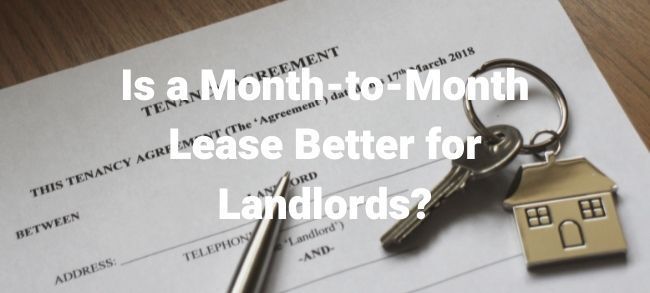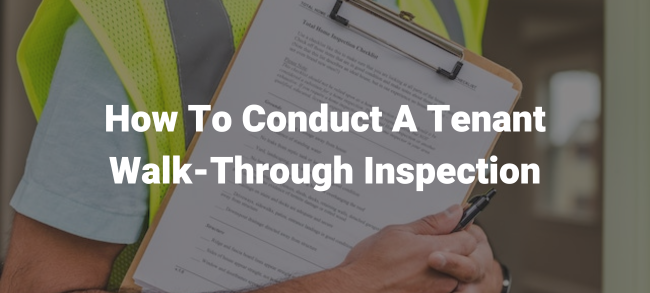Is a Month-to-Month Lease Better for Landlords?
Landlords are often faced with the option to offer a month-to-month lease or a fixed yearly lease to renters. There are benefits and drawbacks to offering a month-to-month lease agreement.
This post will explain what a month-to-month lease is and details the pros and cons of using it. If you want to learn more, keep reading!
Defining a Month-to-Month Lease
A month-to-month lease is a legal contract between a landlord and tenant that renews automatically every month. This will only end when one party sends provides the other with a 30-day notice. There are two variants when it comes to month-to-month leases. It can be an extension of a prior leasing agreement or it could be a signed month-to-month binding lease from the start.
Here are some benefits and drawbacks to contemplate before deciding on a month-to-month lease arrangement:
Benefits of a Month-to-Month Lease
Generally speaking, month-to-month lease agreements allow landlords and tenants a lot more flexibility. Some of the advantages include:
Flexible End of Lease Dates
Typically, when you have a long-term lease, you can’t ask the tenant to leave your Florida rental property in as little as 30 days. As a legal agreement, you need to finish the stated rental term period. In contrast, month-to-month leases would only require one party to notify the other of non-renewal of the agreement within a space of 30 days.
New landlords can also take advantage of this as they become more familiar with the ins and outs of managing properties. For instance, a landlord can hone in on their tenant screening skills.
If you miss something in the screening process but you have a long-term lease agreement you can be stuck with a renter that’s not high quality and have little control over increasing the rent or changing the rental rules. With a month-to-month lease, you have the ability to make a correction to the agreement or serve the tenant with a 30-day notice.
Rent Price Adjustments
A month-to-month lease permits a landlord to adjust the rent rate quickly. If they anticipate a peak season, they can notify the current tenant and proceed to increase the rate due to a higher demand for rentals. Instead of waiting an entire year for the end of the tenancy, no time is wasted thereby providing optimal earnings.
No Penalties for Breaking Agreement
Since a month-to-month lease is short-term in nature, ending the lease is bound to happen. There’s little legal consequence for breaking the lease as long as the proper notice has been sent. Therefore, landlords have plenty of wiggle room when it comes to suspending the contract.
Policy Changes are Easier
Just like rent price adjustment, you can also adopt new rules as soon as the month-to-month lease terminates. With a longer-term lease, you have to wait for a while or include addendums to the original signed agreement. If you wish to create new rules, it’s far easier to do so in a month-to-month lease.
Drawbacks of a Month-to-Month Lease
Even if the upsides are plentiful, there are also disadvantages to implementing a month-to-month lease. The temporary nature of a month-to-month lease lends a conditional environment. Sometimes, the demand for Florida rentals is high and at times, you might find yourself short of renters.
Disadvantages of a month-to-month lease agreement include:
Uncertainty
While flexibility can be positive, this also means a tenant can leave anytime provided they give you proper notice. Finding quality renters can also be short-lived. Normally, you’d want them to stay longer to earn a consistent income and reduce your stress.
Short Notice
It can be challenging to find new tenants within a month. Filling a vacancy right away can induce stress. It also requires an investment of time and money to market your units. What’s more, this short timeframe can lead to making unwise decisions due to the time pressure. Your tenant screening might be inadequate due to a lack of time.
Unpredictable Income
On a peak season, your flow of renters may be continuous. However, when turnovers occur and you’re unable to find a suitable replacement, your income suffers. Thus, a month-to-month lease can mean accepting unstable earnings.
Signing a Month-to-Month Lease
To protect your interest in case there’d be legal confrontations, later on, it’s best to have a written lease even when it’s a month-to-month one. You don’t need to sign a new lease after each month ends provided you have a Holding Over clause in your contract.
The Holding Over clause ensures the continuity of the agreement on a month-to-month term once the tenancy date ends every month. This clause makes it easier to hold up the agreement without signing a lease every month. It also protects your interest should a tenant refuse to leave when the rent period is over.
Defining the 30 Days’ Notice for a Month-to-Month Lease
Thirty days is the minimum period required to send a notification to the landlord or tenant indicating that the month-to-month lease will expire. But this can also be given ahead of the 30-day period.
Other than the tenancy’s end, the 30-day notice can also apply to policy changes and rent price increases. So long as the renter is given the clear directive within thirty days then changes can be made. It’s also worth mentioning that rent increase notices should be put in writing.
When making changes to the lease agreement ensure that you are always following Florida’s landlord-tenant laws.
Bottom Line
Now that you have an idea of the benefits and drawbacks of using a month-to-month lease, you can make a more informed decision about whether or not it’s the right kind of agreement for you. You need to weigh whether flexibility or stable earnings are your priority.
If you want to avoid frequent marketing of a vacant rental then maybe a fixed-term lease is more fitting. On the other hand, a month-to-month lease can offer you more room for adjustments in terms of price and policy changes. This can be helpful to a new landlord.
For help managing your rental properties contact the real estate experts at Advantage Realty Services today!












